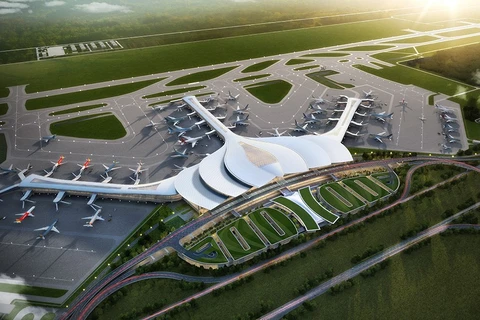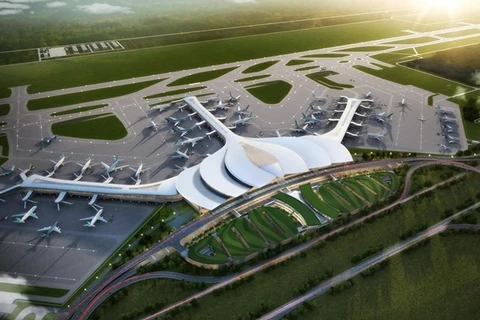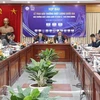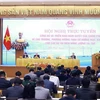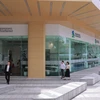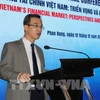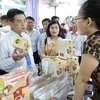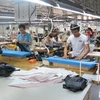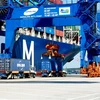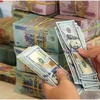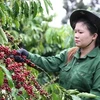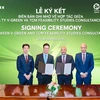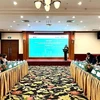Dong Nai (VNA) – Prime Minister Pham Minh Chinh on August 31 attended the ground-breaking ceremony of three main bidding packages of Long Thanh International Airport project in the southern province of Dong Nai, and Terminal 3 of Tan Son Nhat International Airport in Ho Chi Minh City, with total investment of about 52 trillion VND (2.15 billion USD).
In his remarks at the ceremony in Dong Nai province, the PM stressed that infrastructure development, especially transport infrastructure, is one of the three strategic breakthroughs set by the Party and the State.
He said that Vietnam’s aviation infrastructure has been upgraded and expanded. However, it has yet to catch up with the development of the country and the world as well, with overloads seen at many airports, especially Tan Son Nhat.
The first phase of the Long Thanh International Airport and Terminal 3 of the Tan Son Nhat International Airport play a crucial role in the national network of international airports, as well as in national defence and security, and socio-economic development in the Southern Key Economic Zone in particular and the country in general, the PM stressed.
In his remarks at the ceremony in Dong Nai province, the PM stressed that infrastructure development, especially transport infrastructure, is one of the three strategic breakthroughs set by the Party and the State.
He said that Vietnam’s aviation infrastructure has been upgraded and expanded. However, it has yet to catch up with the development of the country and the world as well, with overloads seen at many airports, especially Tan Son Nhat.
The first phase of the Long Thanh International Airport and Terminal 3 of the Tan Son Nhat International Airport play a crucial role in the national network of international airports, as well as in national defence and security, and socio-economic development in the Southern Key Economic Zone in particular and the country in general, the PM stressed.
Once completed, they are expected to contribute to turning Vietnam into a major transport centre of the region and the world, and raising national competitiveness, he noted.
The PM asked the Ministries of Transport, Construction, Natural Resources and Environment, and National Defence, and the Committee for Management of State Capital at Enterprises, the People’s Committees of HCM City and Dong Nai province, and other relevant ministries and agencies to step up their supervisions and inspections, quickly remove roadblocks to the implementation of the projects, and ensure their quality, safety, efficiency and progress.
Notably, the People’s Committees of HCM City and Dong Nai province need to speed up other transport projects linked to airport terminals to ensure infrastructure harmony and efficiency, he stressed.
Corruption, wastefulness and other negative phenomena must be prevented, and legal rights and interests of people must be guaranteed, PM Chinh said.
The above-said bidding packages include the construction and installation of equipment at terminals, runways, taxiways and aircraft aprons of the Long Thanh International Airport, and at Terminal 3 of the Tan Son Nhat International Airport.
Covering a total area of more than 5,580 hectares, the Long Thanh airport will spread across six communes in Long Thanh district of Dong Nai province. The airport’s total investment is 336.63 trillion VND, with construction divided into three phases.
The PM asked the Ministries of Transport, Construction, Natural Resources and Environment, and National Defence, and the Committee for Management of State Capital at Enterprises, the People’s Committees of HCM City and Dong Nai province, and other relevant ministries and agencies to step up their supervisions and inspections, quickly remove roadblocks to the implementation of the projects, and ensure their quality, safety, efficiency and progress.
Notably, the People’s Committees of HCM City and Dong Nai province need to speed up other transport projects linked to airport terminals to ensure infrastructure harmony and efficiency, he stressed.
Corruption, wastefulness and other negative phenomena must be prevented, and legal rights and interests of people must be guaranteed, PM Chinh said.
The above-said bidding packages include the construction and installation of equipment at terminals, runways, taxiways and aircraft aprons of the Long Thanh International Airport, and at Terminal 3 of the Tan Son Nhat International Airport.
Covering a total area of more than 5,580 hectares, the Long Thanh airport will spread across six communes in Long Thanh district of Dong Nai province. The airport’s total investment is 336.63 trillion VND, with construction divided into three phases.
 Once fully completed by 2050, the Long Thanh airport will be able to handle 100 million passengers and 5 million tonnes of cargo annually. (Photo: VNA)
Once fully completed by 2050, the Long Thanh airport will be able to handle 100 million passengers and 5 million tonnes of cargo annually. (Photo: VNA) Once fully completed by 2050, the airport will be able to handle 100 million passengers and 5 million tonnes of cargo annually.
Located 40km east of HCM City, the airport is expected to relieve overloading at the Tan Son Nhat airport, now the country’s largest airport.
Terminal 3 of the Tan Son Nhat airport is estimated to cost nearly 11 trillion VND. It is expected to become operational in the second quarter of 2025, handling domestic flights and up to 20 million passengers annually.
The number of passengers going through the Tan Son Nhat airport has surged in recent years to nearly double its designed capacity. The airport was designed to handle 25 million passengers a year by 2020, but it has been receiving almost 40 million a year since 2017.
The airport has two terminals now, with T1 serving domestic flights and T2 handling international flights. T1 can serve up to 15 million passengers a year and T2, 10 million./.
VNA


